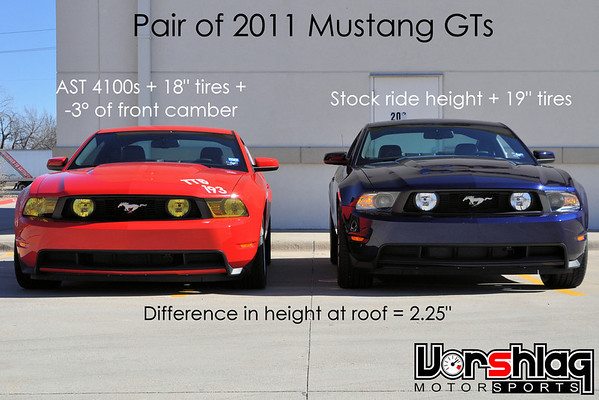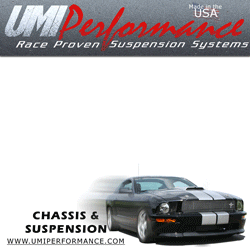When you shorten the strut you are trying to maximize total suspension travel at a new, lowered ride height. But yes, there is going to be less total suspension travel compared to stock. It is just part of the math.
Except that it has other implications, namely that the vertical acceleration forces you'll be feeling
must be higher when traversing larger pavement variations. Yes, as long as the pavement variation magnitude remains constrained below some certain threshold, you can retain the same ride quality, but once you go beyond that, the ride must become harsher. And the less suspension travel you have, the smaller that magnitude will be.
An example is in order. Consider driving over the raised pavement markers that divide lanes on the highway. Whether your car is properly lowered or has stock suspension travel, I expect that both can be made to handle those without feeling substantially different from each other, simply by setting the compression in the dampers appropriately. That's because the pavement variation magnitude is relatively low in that instance.
But now consider driving over a speed bump. Suddenly, the properly lowered car is going to handle that very differently than the car with the stock suspension travel, because the amount of suspension movement required will either come very close to the amount the lowered car can handle or will exceed it, while the car with stock suspension travel may be able to handle it.
A daily driver has to be able to handle all the pavement variations it may come across while providing acceptable ride comfort under those conditions.
So we tend to increase the spring rates to compensate, so that the suspension doesn't need or use 6 or 8 inches of total suspension travel, like the stock set-up.
But the point here is that how much you need depends on what you're driving over. You can't lower the car without sacrificing
something, no matter how well you do it.
There is no cheap solution to properly lowering a Mustang. There isn't a good option for "only 3/4" lower than stock" springs, unless you go with the some other super soft stock set-up. Which won't make an appreciable handling difference, because you are neither lowering the CG by an significant amount nor firming up the spring rates to lesson pitch/roll/heave.
I guess it all depends on what you mean by "significant amount". Those Boss 302 owners who went with the P springs seem to think the improvements were more than insignificant based on their experiences on the track. I'm sure a good coilover setup would be even better, but then you run into the streetability issues I mentioned previously.
Some folks think if they do enough research they will find the good, cheap answer. It isn't there, no matter hard you look. Mustangs have pretty piss poor suspension set-ups from the factory, and it takes a bit of coin to fix, but these cars CAN handle much better and still ride very well, if you make the right choices and use your budget wisely.
I'm not at all attempting to cheap out here. I spent nearly $40k for the car. I can afford a few thousand for a suspension setup as long as I only have to buy it
once. But I have certain requirements that I suspect even the best coilover setups will be unable to meet. And if they can't meet them, then I may as well get the look I'm after (the stock suspension looks too much like an SUV's, and most lowering springs lower the suspension too much for my liking, hence the 3/4" drop I mentioned) and as much of an improvement in handling as I can get within the limits of my other requirements while spending the least amount of money I can on it.
Unfortunately, when it comes to the suspension modifications we're discussing here, the only way to determine how well something will work is to experience it firsthand, because ride quality is a
purely subjective thing, as is the driving experience itself. That means experimentation, and
that means starting off inexpensively while buying components that have the widest possible applicability (e.g., Koni Sports).
I don't intend to make any changes at all until I've driven the car in stock form (except for 285/35-19 street tires on 19" Forgestar F14 wheels, stainless brake lines, Boss 302 brake ducting kit, Castrol SRF fluid, and Stoptech pads) on the track two or three times. It's the only way I'll be able to determine for myself what I really want out of the car on the track. But as it is first and foremost a daily driver here in Silicon Valley where they can't even figure out how to lay down smooth concrete for
brand new freeways (for those of you who live in the area, I'm talking about 280 near and south of 85), I will be limiting my changes with that in mind. And given that it's been something like 15 years or so since I've been on the track, I'm going to be taking this
slow.
EDIT: and it turns out that the cost of those Boss 302 springs isn't $160, it's
$80 for all 4 corners.



 Kindly explain how does one adjust ride height with coilover if the lower spring perch doesn't have any effect on the ride height...
Kindly explain how does one adjust ride height with coilover if the lower spring perch doesn't have any effect on the ride height... 








